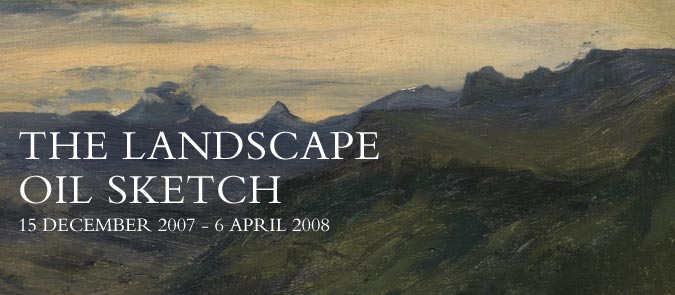Most landscape oil sketches from the 18th and early 19th centuries were never intended for exhibition - sketching out of doors was used primarily as a training for the hand and the eye. Often sketches remained overlooked, staying in artists’ families rather than being offered for sale. Only a few collectors recognised the quality of pieces in this tradition.
This exhibition celebrated these collections. Degas owned studies by Corot and Théodore Rousseau - the National Gallery purchased these pictures at the sale of his collection in 1918. They now form the core of a small but distinguished group of works, which was augmented in 1999 by the long-term loan of the Gere Collection.
John Gere, former Keeper of Drawings at the British Museum, and his wife, the writer Charlotte Gere, began collecting in the 1950s when this style of painting had received relatively little attention from art historians. Their collection is now considered to be one of the finest of its kind. A selection of these paintings were on show in the exhibition.
History of the Landscape Oil Sketch
In the latter part of the 19th century, the immediacy and spontaneity of oil sketching was adopted by the Impressionists, but conversely its importance in academic practice declined.
Artists had been painting oil sketches in the open air, on paper or small panels, as early as the 17th century. By the late 18th century, the practice was widespread across Europe, with Italy the undisputed centre. Artists of all nationalities congregated in Rome, where they set out for the Campagna and other picturesque locations, such as Tivoli.
Not all sketches are of noted sites. Many of them focus on unassuming corners of nature such as tree trunks and running water. Artists were exhorted to paint quickly in order to capture fleeting light effects.
During the 19th century artists continued to work in Italy but also found inspiration in their native lands. The paintings in this exhibition depicted Britain, France, Spain and the Low Countries, as well as Italy.

